How asparagus grows
In addition to the familiar and familiar to us vegetables, there are unusual, exotic, which can be easily grown at their summer cottage, if such a desire arises. Few people know the special taste, aroma and value of asparagus, and even an inexperienced gardener will be interested in the method of growing a crop.
Content:
- Let's get acquainted
- A treasure trove of nutrients
- How asparagus grows
- White asparagus
- Asparagus green and purple
- Asparagus seeds
Let's get acquainted
Asparagus or asparagus named about a hundred species of plants that prefer dry climatic conditions. In appearance, it can be perennial grasses or lush shrubs, but a common feature is a powerful underground rhizome deeply embedded in the ground. In early spring, several shoots break through, the soil above which cracks. It is at this moment that you need to have time, carefully raking off the ground, go deeper into it and cut off the upper part of the shoot, wrapping it in a damp cloth, because the asparagus quickly withers.
The above-ground, developed branchy parts of the stem look like delicate fluffy Christmas trees that are used to decorate bouquets. The flowers are inconspicuous, and the berries are red, the size of a pea, seeds ripen in them, which can be sown in order to eventually get young, juicy, delicious and very healthy food products.
A treasure trove of nutrients
Asparagus is boiled in a sauce, adding wine, vinegar, garlic and aromatic herbs, pickled like mushrooms, salted, frozen or consumed fresh. Asparagus contains a huge variety of valuable substances necessary for the body, which help to form and strengthen bone and connective tissues, take part in the processes of hematopoiesis, improve the condition of the heart and liver, and regulate the functioning of the genitourinary system.
Recommended use asparagus after a heart attack, as a prevention of strokes due to the ability to influence the work of the heart, dilate blood vessels, and reduce blood pressure. Eating asparagus in food removes toxins from the body, reduces the risk of infectious and bacterial diseases. Asparagus is indicated in cases of prostatitis, cystitis, diabetes mellitus and tachycardia.
A decoction of asparagus roots is prepared by boiling for five minutes, then the decoction is insisted, filtered and drunk, preparing a new one every day. Asparagus juice is used to cleanse and exfoliate dead skin cells, soften the skin of the face, eliminate warts, cornification and calluses.
How asparagus grows
The plant thrives in an open, well-lit area, but it is also planted near trees, while they bloom, you can have time to eat asparagus.
The Germans believe that during the period when asparagus grows, the world becomes magical. This is even sung in one song by a famous group. Well, the ancient Egyptians knew that asparagus is a medicinal plant, because asparagus was one of the symbols depicted on the walls of the pyramids.
Many are interested in how asparagus grows, because in our regions this vegetable is very often confused with one of the varieties legumes... There are two types of asparagus - green and white. White grows underground and is considered a delicacy, while green grows like a common vegetable in the garden.
White asparagus
White asparagus is very often equated with truffles or artichokes in their exotic cultivation. And with its beneficial properties, it really arouses particular interest among fans of healthy eating.Asparagus is considered an excellent diuretic, it removes toxins from the body, is low in calories and contains vitamins A, B, C, and many minerals.
Asparagus is a perennial plant, the tuber of which is placed in the ground at a depth of 30 cm.In spring, asparagus begins to grow rapidly in shoots, and as soon as the plant breaks out to the surface of the ground, it is necessary to dig out the hidden part of the stem underground and cut the asparagus for its further preparation. By the way, it is best to eat freshly cut asparagus. The easiest way to prepare it is to blanch it in salted water. After that, it can be lightly fried in vegetable oil.
Young stems are collected for a short time - only 7-8 weeks, and then the plant is left dormant. How does asparagus grow next? It grows like a bush, nothing from which you can not use.
Asparagus green and purple
The taste qualities of green asparagus are more intense, it contains more folic acid, which is necessary for the successful development and bearing of the fruit. If white asparagus is considered classic, grown without exposure to sunlight, prepared according to special recipes with the addition of caviar and goat cheese, then green asparagus is more affordable, affordable and more often in demand.
Purple asparagus is cultivated by short-term sun exposure at the first stage of photosynthesis until a stable chlorophyll pigment is formed. Purple asparagus has a bitter taste and turns to its usual green color during cooking.
Asparagus seeds
To grow asparagus from seeds, you need to put them in a box with moistened sand in the fall and place them in the refrigerator. In early spring, together with sand, you can sow into the soil. You will have to wait a couple of years before the harvest time comes. In order for the root system to develop and get stronger, you can feed young asparagus with nettle infusion. And to get delicate white shoots, you need to cover the asparagus breaking through to the surface with boxes, shading the shoots from the light.
It is easy to grow asparagus so that after many years you can feast on its tasty and healthy shoots, which appear along with the first leaves of nettle, parsnip and dandelion.



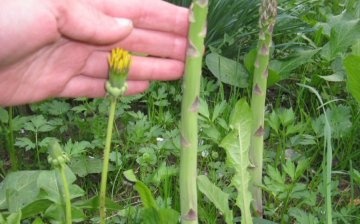
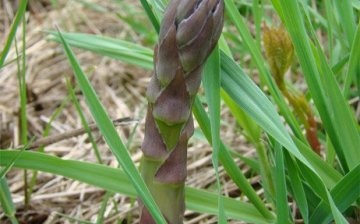
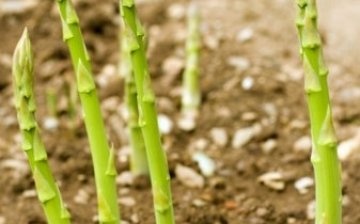
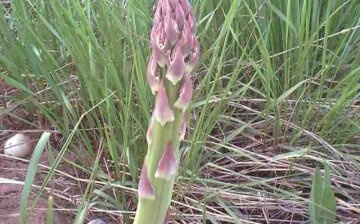




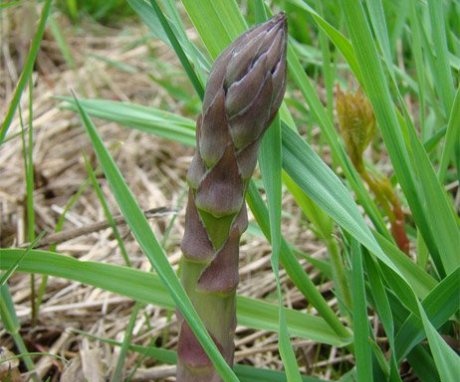
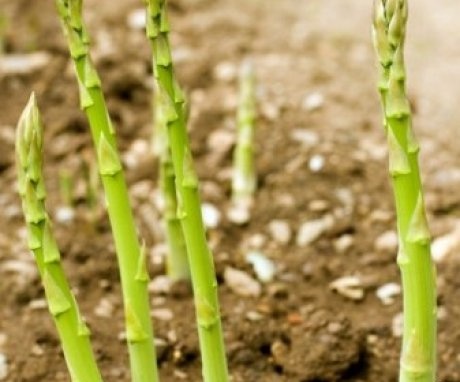
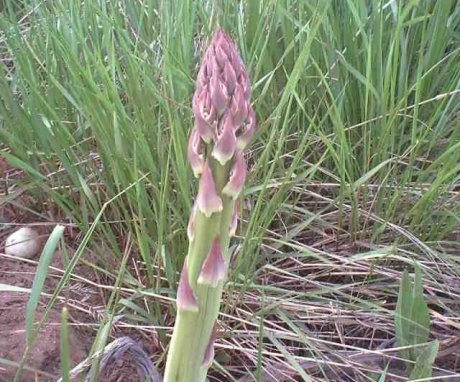
But the Christmas tree, the decorative twigs of which have always been used as additions to bouquets, is it not asparagus? The shoots are very similar ...